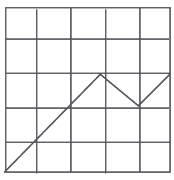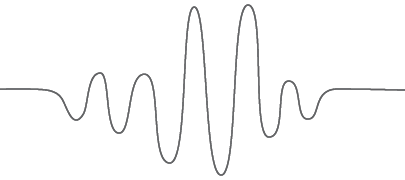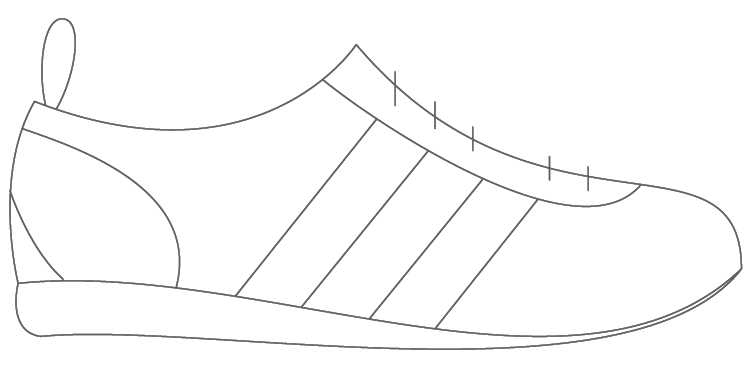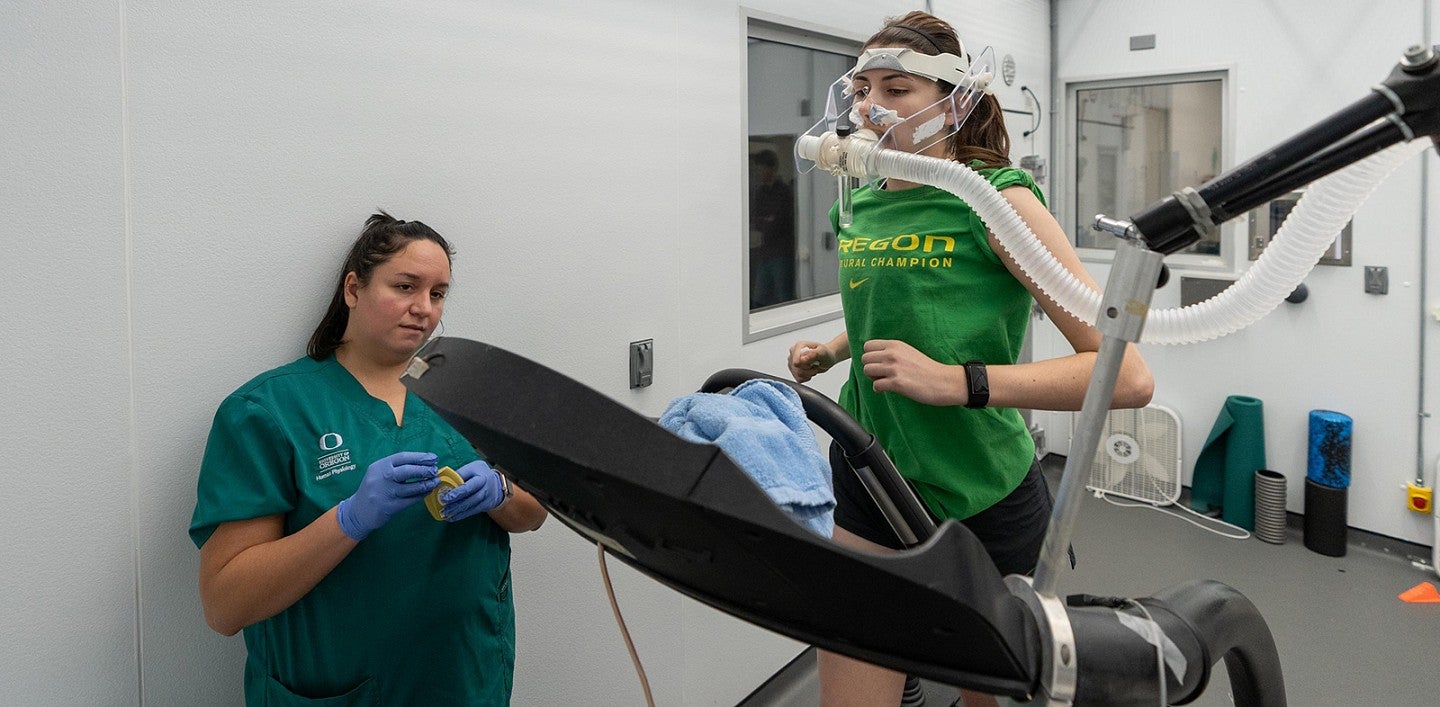

Discoveries made within a lab inside Hayward Field benefit both competitive athletes and weekend warriors
Hayward Field at the University of Oregon draws track-and-field athletes from around the globe—from world-record breakers to runners who are thrilled just to be there in the middle of the pack.
But the live action is not the only exciting thing going on at the stadium. Tucked into the northwest side of the facility, faculty members and graduate students at the Bowerman Sports Science Center (BSSC) conduct groundbreaking research on the mechanics of the human body and how it reacts to stress. Along the way, they work with local runners, both amateur and professional, to help them achieve their performance goals while avoiding injury.
Many staff and students in the BSSC are also playing key roles for the UO in the Wu Tsai Human Performance Alliance. The alliance, made possible by a generous gift from the Joe and Clara Tsai Foundation, is based at Stanford University and made up of six founding institutions, including the University of California San Diego and the Salk Institute. Alliance members translate research into peak performance to broadly benefit human health. The UO’s efforts in the alliance are centered in the Phil and Penny Knight Campus for Accelerating Scientific Impact but extend into several areas on campus.
“If someone has a hamstring injury, how can we accelerate their return to activity?” says BSSC director Mike Hahn, associate professor of human physiology. “If they have an Achilles tendon injury, should we still use the model of rest and slow recovery, or can we speed that up? If we see indications of pending injury, can we change their training practice to reduce the risk?
Force, acceleration, velocity, and torque
The biomechanics laboratory features a treadmill with embedded force plates, which is paired with a camera-based motion analysis system. After markers are placed on various bony landmarks of an athlete’s body, cameras record motion directly to a computer, allowing for a dynamic three-dimensional view of the body. “We can record very detailed angles and displacement,” Hahn says. “The force plates measure how much force you're putting on the ground and in which direction, and then we take that information and the motion of the body to calculate how much force and torque is produced by the ankle, knee, and hip.”
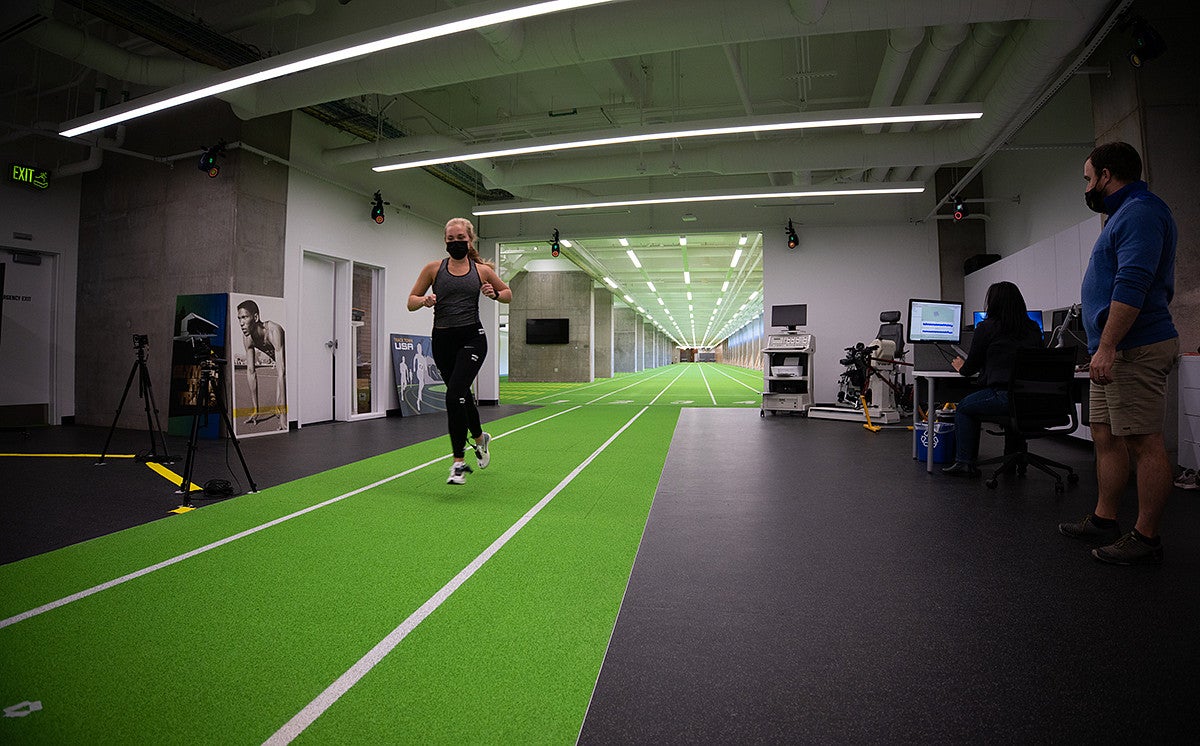
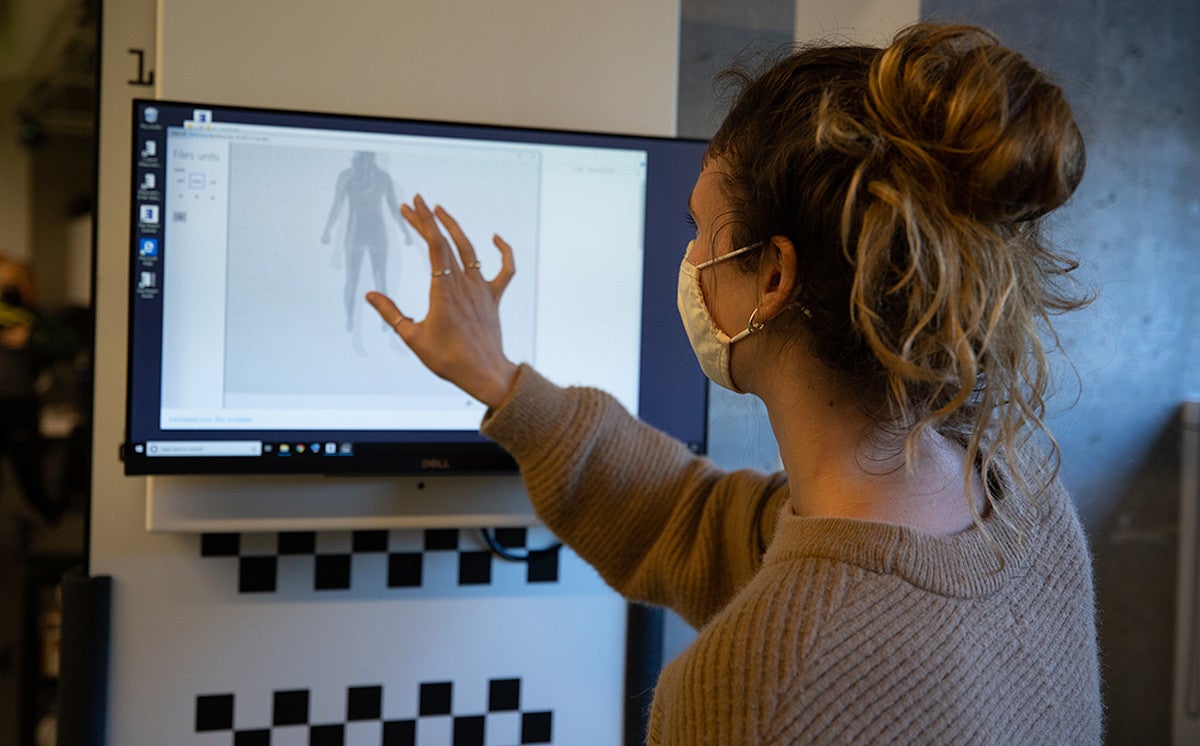
The facility’s indoor track also has embedded force platforms and cameras that pick up on the motion of markers placed on the body, as well as sensors to measure muscle activation. “As we look at the patterns of how the quads and hamstrings fire, we can compare those to the physics of what’s going on in the joints and calculate how much force is trying to stretch the ACL, or how much force is crossing over the Achilles tendon,” Hahn says. The equipment also allows researchers to measure balance changes caused by head or orthopedic injuries.
The center’s Biodex machine provides data on the torque output from each of the joints and shows how stable they are, as well as how much force the muscles are producing. MRI scans taken of the lower limbs allow researchers to create a 3D picture of the tissues in the body, then add the data gathered from when the person is running to create a personalized mathematical model of their musculoskeletal system.
Multiple modes of data collection
Other labs in the facility include an environmental chamber, where athletes can perform at high altitude, or in extreme heat, cold, humidity, or wind, and where clothing companies can test equipment to see how it fares. In the exercise physiology lab, athletes sit in hot tubs or saunas for extended periods, testing the cardiovascular response to heat and comparing it to that of exercise.

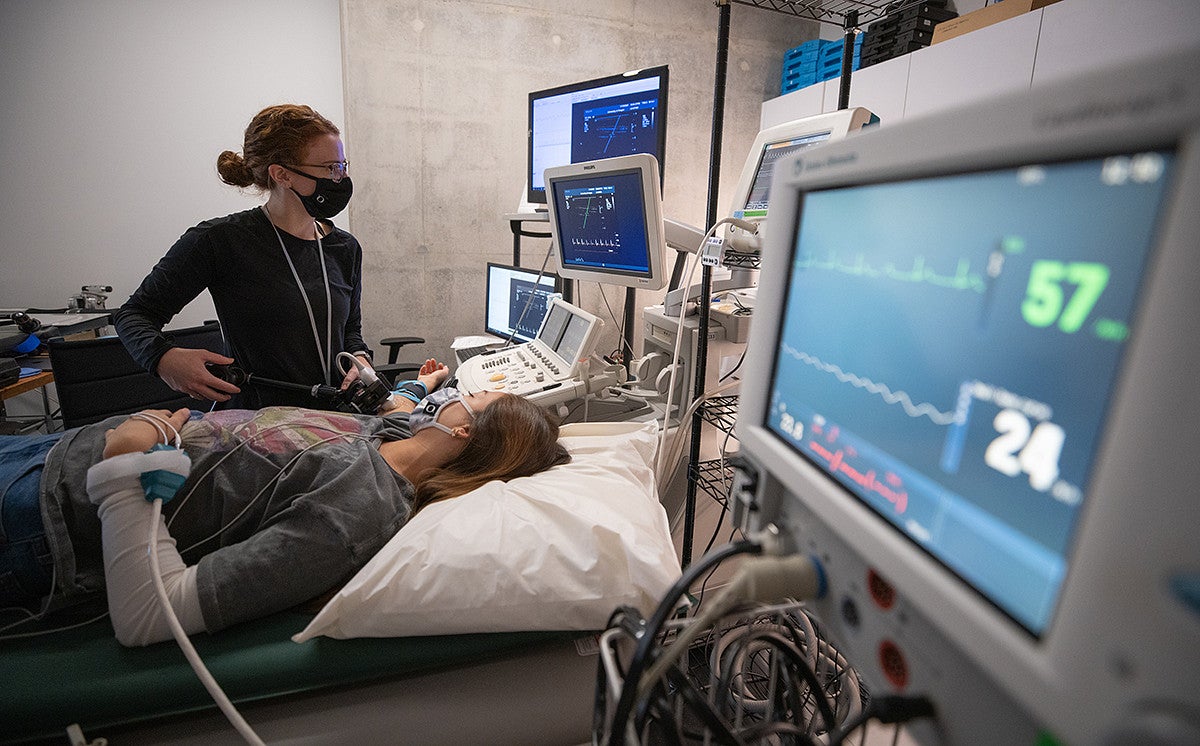
Other researchers in the BSSC use ultrasound to study cardiovascular physiology, measuring arterial blood flow to see how it changes with heat and stress. Another machine measures bone density, which is important not just for older people, but for athletes who may overtrain and lose bone density because the body starts to reabsorb minerals, increasing the risk of bone stress fractures.
Better prosthetics
Mike Hahn, the center director, is collaborating with a colleague from the University of Wisconsin to design a prosthetic foot that will work both for walking and for running. When a prosthesis user is walking, they need a heel component and a toe component, but when they run, he says, they need only the toe component.
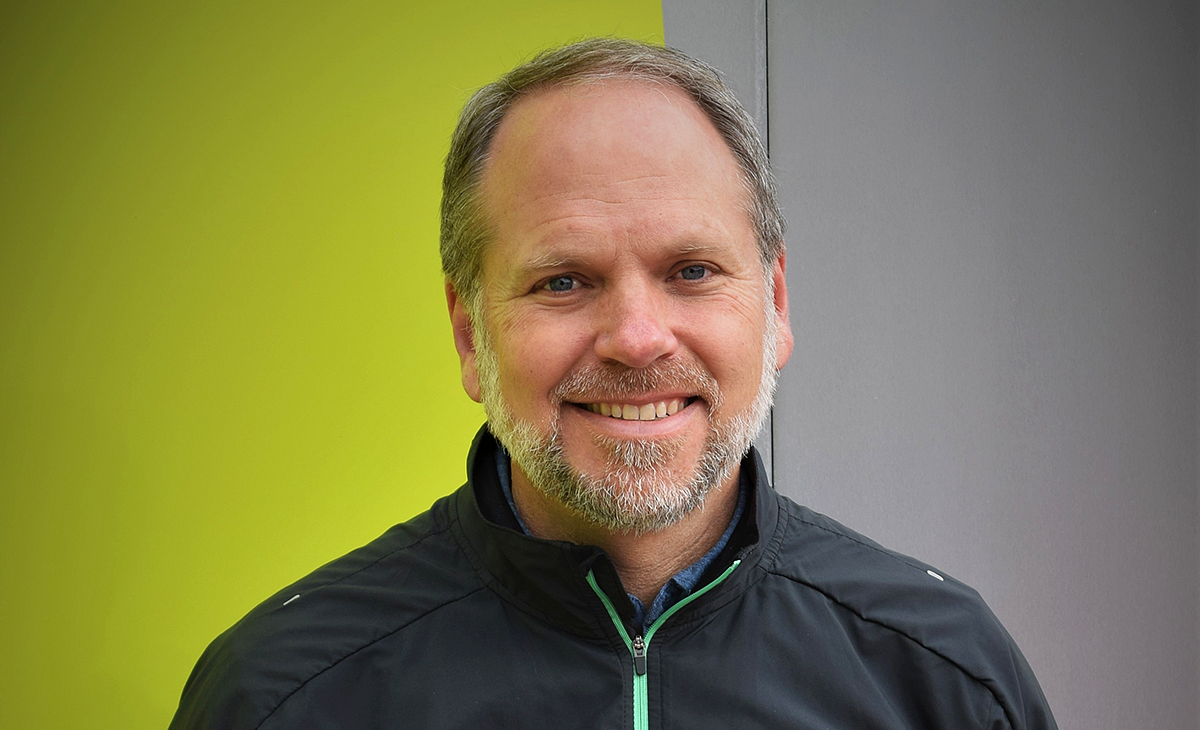
O2 to the max
Hassan Mead lives in Eugene and feels very fortunate to have access to the Bowerman Sports Science Center. “That’s been my biggest advantage,” he says. A professional runner with the Oregon Track Club, Mead competed in the 5,000 meters at the 2016 Rio Olympics.
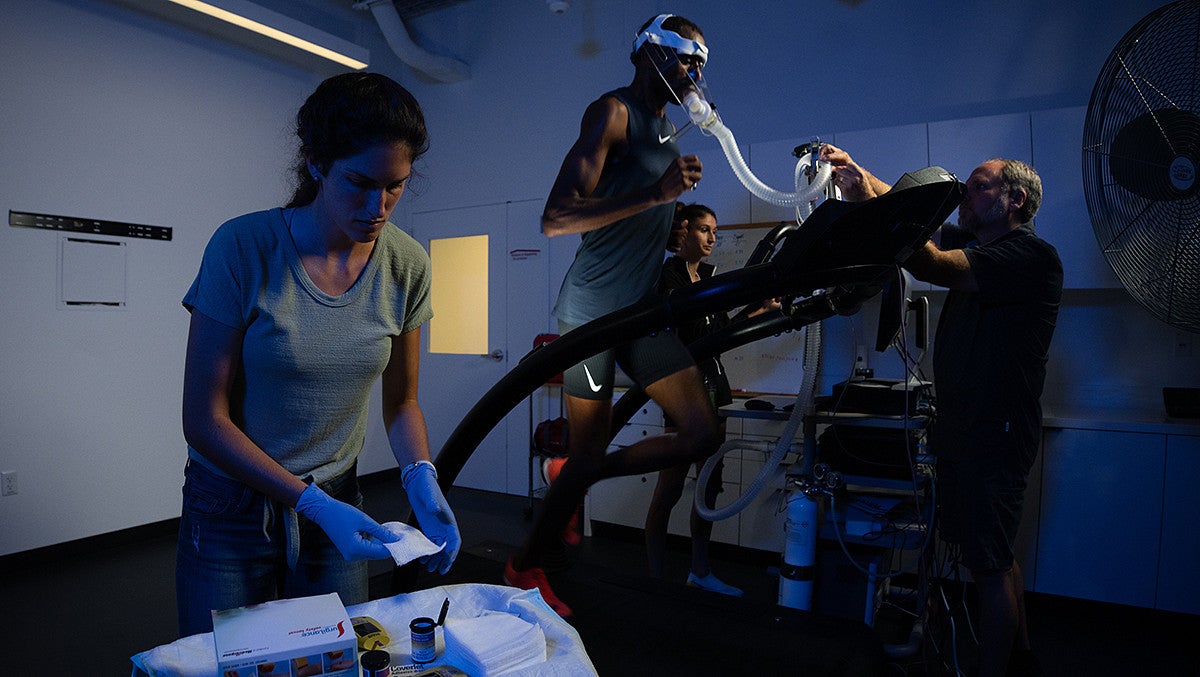
He has taken advantage of the lab’s ability to do lactate threshold and V02 testing — which involves finding an athlete’s rate of oxygen consumption during exercise sessions. “As a distance runner, it's important to be very energy efficient,” he says. The testing has confirmed his training plan. “We’ve done it every four years and it’s still confirming that we’re on the right track.”
Results from the great outdoors
Rachel Robinson knows a thing or two about running-related injuries. As a practicing physical therapist, she’s seen the gamut of what can go wrong on the trail. She’s become so interested in how the body functions and how injuries happen that she’s now working on a PhD in human physiology. In her first year, she’s co-teaching a human physiology class for undergrads and helping with a study that uses wearable sensors to measure biomechanics outside the lab. “We’re sending runners from the community out on trails and roads to get a better sense of what's happening when they're out there,” she says.
For the outdoor runners, small sensors that measure acceleration are used in combination with a Loadsol (a very small version of a force platform), which goes in between the sock and sock liner inside an athletic shoe. Another sensor is attached to the waistband of the runner, as well as GPS and heart rate monitors. The results from these runs are compared with measurements made with the same runner inside the lab.
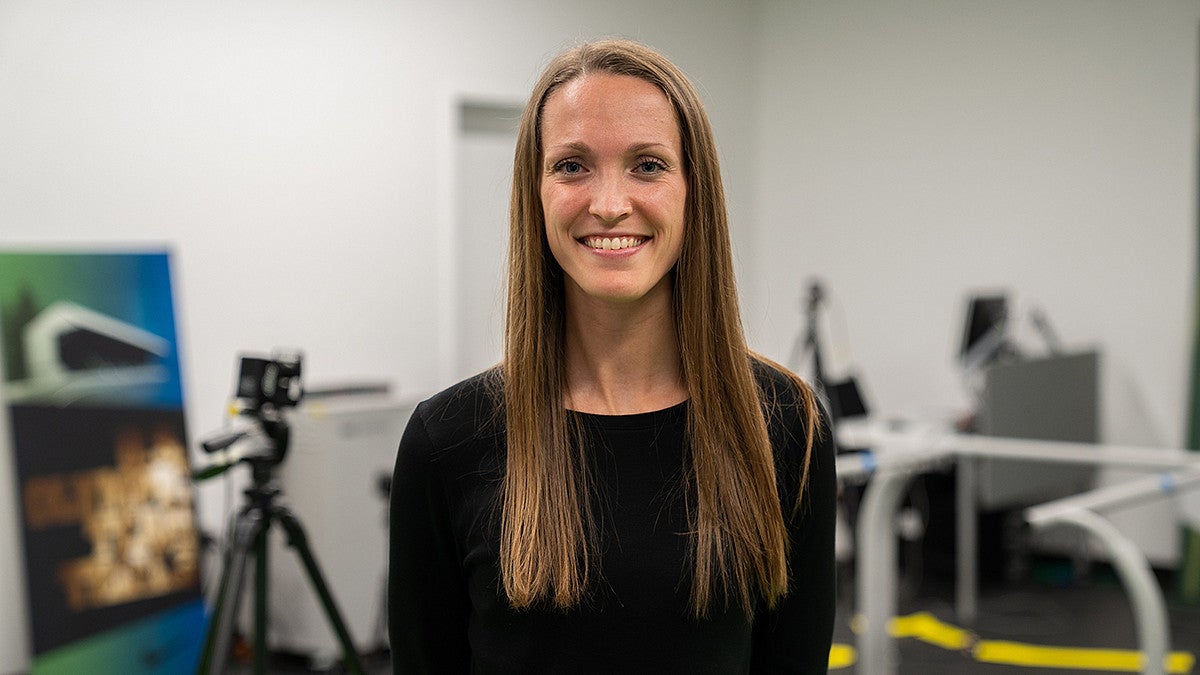
Shoe fascination
Emily Karolidis’ interests lie in shoes—shoes with cleats, that is. The second-year PhD student, who studies footwear biomechanics, played soccer at an advanced level in high school. “The prevalence of injuries among female soccer players was very clear,” she says. “Female athletes aren’t getting the attention they deserve.” Karolidis wants to use her knowledge of biomechanics to design better footwear for women and hopes to work in a research lab where she can help athletic companies design more functional products.
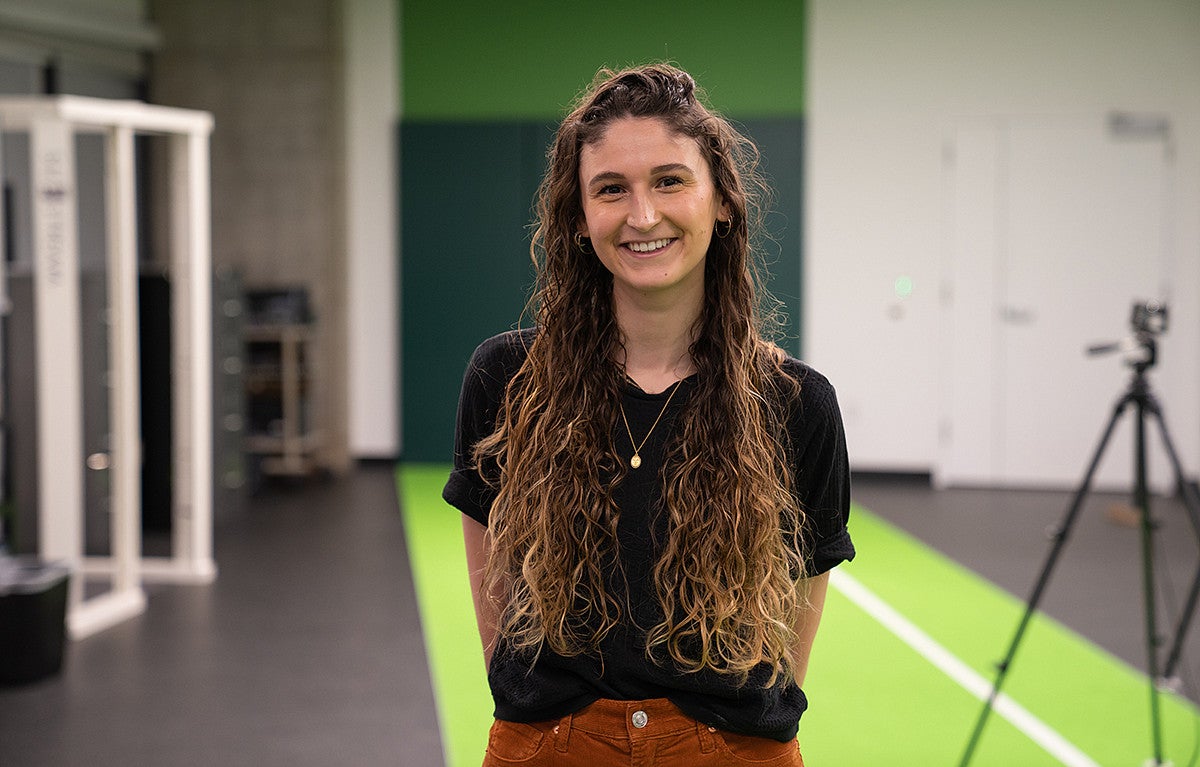
Sharing the knowledge
As part of a longitudinal running study, BSSC faculty and staff have worked with about 45 local runners, offering them VO2 max and lactate threshold tests, biomechanical assessment of running gait, and injury risk assessment. “We love getting the local community involved in the research,” Hahn says.
He is also collaborating with former Duck women’s basketball coach Bev Smith, now head of Kidsports in Eugene, to put on a “Science in the Field” day. Faculty and grad students will talk about nutrition basics, training principles, and what the body should feel like after exercise. “If we can get it into their minds early that recovery after practice as a 12-year-old can be the same as recovery after practice as a 25-year-old, that would be great,” Hahn says. “They need to know that there's nutritional benefit to eating good foods at good times to have fuel in the tank, not just so they can have a good practice, but also so they can recover quickly. We feel like there's an opportunity for the kids to learn how to make good decisions.”


